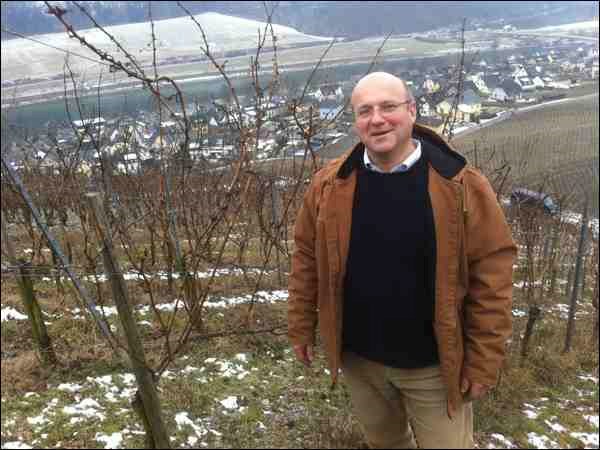Walking in the vineyards on the steep banks of the Mosel River in southwestern Germany, I wondered how anyone maintains or harvests, or does anything, on these slopes without mountain goat hoofs or ropes. And the "soil" is metres of coarse shale. Wheat is definitely not the backup crop here. Winemaker Johannes Selbach tells us that the roots of some of the very old vines go down as much as 12 metres to get necessary nutrients - that's a long journey to feed a grape!
For 700 years the Cistercian monks laboriously tended the vines and cultivated the poor, infertile, rocky soil of Burgundy, France - the very region that produces some of the world's most valuable wines. While the terrain may vary in vineyards around the world, vintners and winemakers everywhere have long understood that if you want the very best qualities that any particular grape variety has to offer, then the grape vine must work. Oversized, plump, well-watered, high-yielding grapes found in the supermarket are nice on the table for casual munching, but useless for the wine bottle. Conversely, grapes that come from vines that have struggled for their sustenance, offer to the winemaker a richer flavour profile to work with. Obviously too much vine stress (severe drought, etc.) can retard fruit bearing and leave the vines damaged. Generally speaking, though, strain on the vine brings gain in the wine.
When I savour a glass of quality wine I sometimes wonder about the struggle thing. I wonder if our culture's obsession with personal comfort, convenience and affluence comes at the expense of fibred character, mature perspective and relational depth.
Raise a glass of wine to hard won fruit.
Enjoy.
Doug Reichel
Visit: FineWinesSask.com
Doug's Wine Picks for the Week
Selbach Riesling Spatlese (Detzemer Maximiner Klosterlay) 2012 - Germany ($17.75 - ID#6065) Winemaker: Johannes Selbach. Don't let the German description frighten you! It locates from where the grapes come from near the village of Detzem. This wine has done more to turn Saskatchewan toward the rich, ripe honeyed fruit of mature, balanced Rieslings than almost any other wine. Food recommendations: Excellent with just about everything including poultry, aromatic or spicy dishes or preparations with some sweetness in the sauce (e.g. "crossover" cuisine, Asian cuisine). Also very good with blue-veined cheese or savoury soft rind cheeses. Drinking temperature: 9- 11 C.
Melipal Malbec Nazarenes Reserve 2010 - Argentina ($33.05 - ID#7405). Description: This area of Argentina is a natural desert watered from streams rushing down from the Andes' perpetual snows. This is vital on account of the scarce annual rainfall - 20 cm (7 in.) vs. Saskatchewan's 45 cm (17 in.). These Malbec grapes are from the sandy soil of their oldest 1923 vineyard where the yield is low but with an amazing concentration of flavour. The wine is matured for 18 months in French oak barrels. The result: a stunning "tooth-staining" huge red wine!
All wines listed are available in Saskatchewan through your local government liquor store or rural liquor franchisee. If they don't have it in stock, request it by ID number, they'll bring it in.




